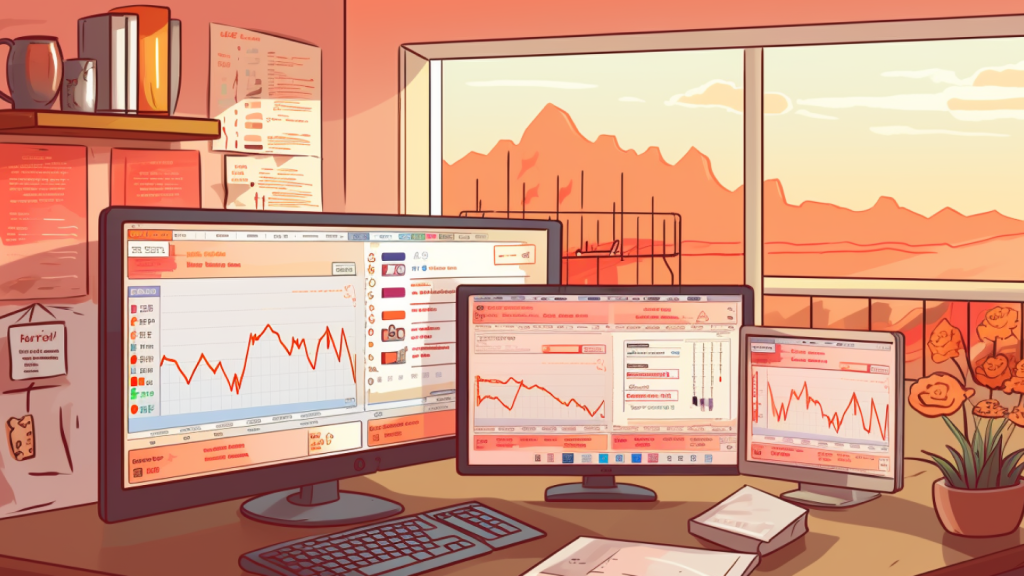Launch a No-Code MVP in Two Weeks
Prove your product idea before you waste a ton of time and money
There has never been a better time to build a digital product. You can launch ideas cheaper and faster than ever. With web software frameworks like Ruby on Rails, Node, Vue, and React coupled with cheap and easy deployment on services like Heroku, a fully featured web product can be built in a few months. The problem is it’s TOO easy to build a digital product.
Entrepreneurs (especially technical founders) often start building their product before they know if their idea is any good. They waste lots of money and time building only to pivot their product every couple months. This means major code refactoring, technical debt, and team burnout. This is how products become a solution looking for a problem.
What if there was a better way? What if there was a way to learn a ton from your target customers before betting the farm? Read on.
Prove Your Idea
For now, let’s just assume that you have already done your customer development homework:
- You created your Lean Canvas and identified customer segments, sales channels, and your unfair advantage.
- You found where your target customers hang out online, and you have some research calculating about how many customers are out there.
- You personally interviewed potential customers in those segments to fully understand their problems and level of pain.
- You have a monetization strategy, and you have a good feeling about your target customer’s willingness to pay.
- You even launched a landing page to test your value proposition and got some people to enter their email.
Good Job! Time to spend $$$ and 3-6 months building your product? STOP! You have one more job to do: The No-Code Minimum Viable Product (MVP).
The No-Code Minimum Viable Product (MVP)
What’s a no-code MVP? It’s an experiment that tests your idea in the wild. A no-code MVP is a new product made from existing products that proves or disproves core assumptions about your market and target customers without writing code. You literally create a flow that glues together existing applications into a new product.
The best part is that you can create a no-code MVP in weeks instead of months with almost zero money invested.
10 steps to launch a No-Code MVP in 2 weeks
Week 1, Day 1
1. First, get very clear about your core assumptions. Make a list. For example, Airbnb needed to prove that people wanted to make extra money by renting extra space in their home to strangers. They also needed to know if people would rent space in strangers homes. Similarly, Lyft needed to prove that people would want to pick strangers up and drive them around in their spare time. What do you need to prove for your product to work?
2. Pick the riskiest core assumption. What must be true for your idea to work? Use that assumption to design your first MVP experiment around. For example, If you are starting a marketplace app, then proving assumptions on the supply side might be a good first step. Airbnb needed to first prove that people would want to list space in their homes on their site.
3. Create your hypothesis statement. Hypothesis statements have 3 parts:
- Problem: People with this behavior, have this problem.
- Solution: (Short sentence describing key features)
- Success Metric: We’ll know when we’re successful when: (insert main success metric or KPI). A common funnel might be: View Ad > View Product > Add to Cart > Checkout > Purchase. What are the numbers at each level of the funnel that will prove your hypothesis? 1000 product views and 100 purchases?
For example, a hypothesis statement for a new dating app might be: Astrology believers have a problem finding meaningful relationships. They need a way to find and connect with potential dates based on astrological sign compatibility. We will know when we are successful when 1000 users create profiles, and 100 people connect.
4. Start recruiting users to test your MVP. Starting the first day of the second week, you will be testing your MVP with people in-person. Spend some time to find these people. Ask your friends if you have to, but it’s best to test with people you don’t know. Post to the channels where your early target customers hang out. If all else fails, post an ad to Craigslist and offer a gift card worth $50 to $100 for their time. Pro tip: use Calendly to allow people to sign up for time slots.
Week 1, Day 2
5. Whiteboard your flow. Now you can define your flow. In a perfect world, how could you solve your customer’s problem? What would your ideal application look like? What common apps have similar components that you can take inspiration from?
6. Find your tools. It’s not easy. What are some commonly used apps that solve parts of your problem? What do your target customers use the most? Need landing pages? There’s always WordPress. Do you need a sign-up form? Check out Gravity Forms, JotForms, or TypeForm. Do you need to take payments? Add Stripe. Do you need to send notifications? Connect SendGrid or MailChimp. Check out the No-Code MVP Tools Guide for an updated list of our go-to third-party apps.
Week 1, Days 3, 4, and 5
7. Glue your tools together. Make your whiteboard flow a reality. This is where the magic happens: there are applications out there that help other applications talk to each other. For Example, Zapier allows you to create Zaps. Zaps are little connector functions that do something in one app when something happens in another. For example, when a card is created in a Trello board, a Zap will post a message in a Slack channel. It’s super easy to make a zap.
8. Set up your analytics. Make sure to capture all of the data through your funnel. Use Zaps if necessary to send events to your analytics tool of choice.
Week 2, Days 1, 2, 3, and 4
9. User-test your solution and refine. This step is very important. Sit with users and watch them struggle with your solution. In parallel, you might test with UserTesting.com. Write a script for the testers, and they will give you feedback. It will cost you around $50 per tester, but it’s definitely worth it. I recommend starting with 2-3 testers. After the first round, fix all of the problems the testers highlighted. Then, test with 2-3 more testers. Repeat steps 5-8 three times maximum. It’s easy to get stuck here for too long.
Week 2, Day 5
10. Launch it!: Deploy your project live, and get the word out. Hopefully, you can get into various online communities where your early adopters hang out. You also might even create some targeted Facebook ads. Don’t be shy! Get it out there!
Weeks 3+
Iterate. What is your market telling you? Are you focusing on the right hypothesis? Is the price too high or too low? Review steps 1-10 to tweak the variables and the hypothesis to launch new experiments.
Tips for Success
- Don’t try to automate everything. It’s perfectly fine if you have gaps in your flow that require manual, human intervention. Be the Wizard of Oz. A little smoke-and-mirrors is perfectly fine at this stage. In the beginning, you won’t have that much work to do. When it becomes too much work, that is a positive indicator. Then you may automate that process.
- Ask your target customers what software they use the most. This will inform you about what user experience patterns your users are used to. Then your may be able to leverage the tools they are already using, or use tools that offer similar user experiences.
- Explore Zapier to find products with friendly APIs. If there are a lot of different Zaps for a given product you are interested in using, you know that it’s a popular product with a robust API.
Go a Little Deeper
Here are some resources for you to learn how to glue your tools together.
- Watch this video to see how easy it is to use Zapier to create Zaps.
- Check out Code-Free Startup courses that will show you how different products come together to solve new problems.
- Use ZeroCode templates as a starting point. ZeroCode is a collection of templates built on top of the popular WYSIWYG application builder tool Bubble.is. ZeroCode also has links to courses to learn more about no-code MVPs.
Conclusion
No-code MVPs are a great way to reduce the risk of your venture, and they allow you to learn about your market fast and cheap. Building no-code MVPs can be relatively easy, but defining your core assumptions and developing a strategy to test those assumptions with your target customers can be challenging.
Questions? Please reach out!









